Benchmark
Version Information
- BanyanDB Version: 0.9.0
- Commit: a2479b1c7dd805b74bffbc5f9317da9df6ac95a5
Test Environment
This benchmark was conducted on a Kubernetes cluster with a single node (16 cores, 64GB RAM), deploying a complete BanyanDB cluster with lifecycle support using the skywalking-banyandb-helm chart. Each BanyanDB Pod is configured with resource limits of 2 cores and 4GB memory. The benchmark represents 3 days of continuous data ingestion, with all resource usage and query performance metrics captured after this period. The specific cluster configuration is as follows:
cluster:
enabled: true
liaison:
replicas: 2
env:
- name: BYDB_MEASURE_WRITE_TIMEOUT
value: "1m"
- name: BYDB_STREAM_WRITE_TIMEOUT
value: "1m"
- name: BYDB_TRACE_WRITE_TIMEOUT
value: "1m"
- name: BYDB_STREAM_FLUSH_TIMEOUT
value: "0s"
resources:
requests:
- key: cpu
value: 2
- key: memory
value: 4Gi
limits:
- key: cpu
value: 2
- key: memory
value: 4Gi
data:
nodeTemplate:
replicas: 2
resources:
requests:
- key: cpu
value: 2
- key: memory
value: 4Gi
limits:
- key: cpu
value: 2
- key: memory
value: 4Gi
storage:
data:
enabled: true
persistentVolumeClaims:
- mountTargets: [ "measure" ]
nodeRole: hot
existingClaimName: null
claimName: hot-measure-data
size: 50Gi
accessModes:
- ReadWriteOnce
storageClass: null
volumeMode: Filesystem
- mountTargets: [ "stream" ]
nodeRole: hot
existingClaimName: null
claimName: hot-stream-data
size: 100Gi
accessModes:
- ReadWriteOnce
storageClass: null
volumeMode: Filesystem
- mountTargets: [ "property" ]
nodeRole: hot
existingClaimName: null
claimName: hot-property-data
size: 5Gi
accessModes:
- ReadWriteOnce
storageClass: null
volumeMode: Filesystem
- mountTargets: [ "trace" ]
nodeRole: hot
existingClaimName: null
claimName: hot-trace-data
size: 500Gi
accessModes:
- ReadWriteOnce
storageClass: null
volumeMode: Filesystem
Measure
The test involves 852 services, 5,640 instances, and 9,000 endpoints. These entities produce over 571,000 metric data points per minute for ingestion, with some metrics from identical entities written every 30 seconds.
The following graphs illustrate the resource usage during write operations, showing CPU and memory consumption across the BanyanDB cluster:
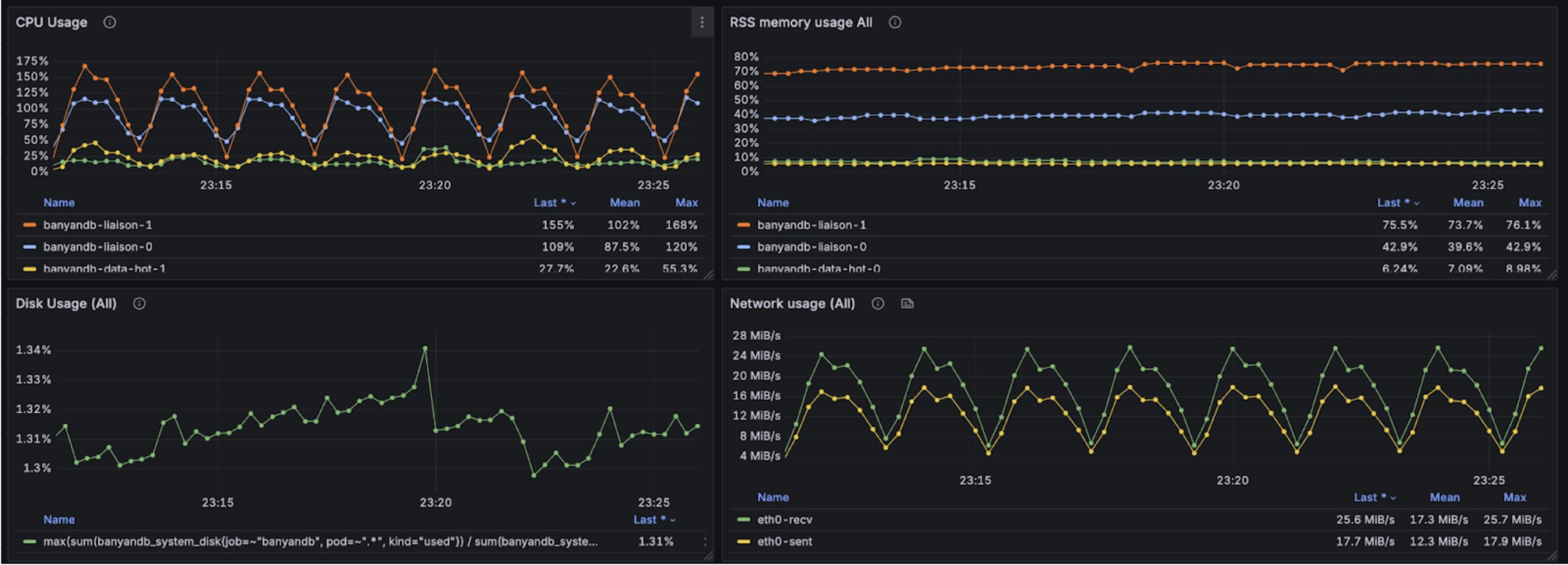

During concurrent write operations, queries were executed against the most recent 15 minutes of data with 50 concurrent requests. The query performance metrics per request are as follows:
Per Request min, max, mean, median, p90, p95, p98, p99 duration (milliseconds): 1.312920, 618.915122, 48.609702, 26.664489, 118.913909, 171.488923, 229.585007, 288.611386
The graphs below show resource utilization during combined read and write operations, demonstrating BanyanDB’s ability to handle concurrent workloads:
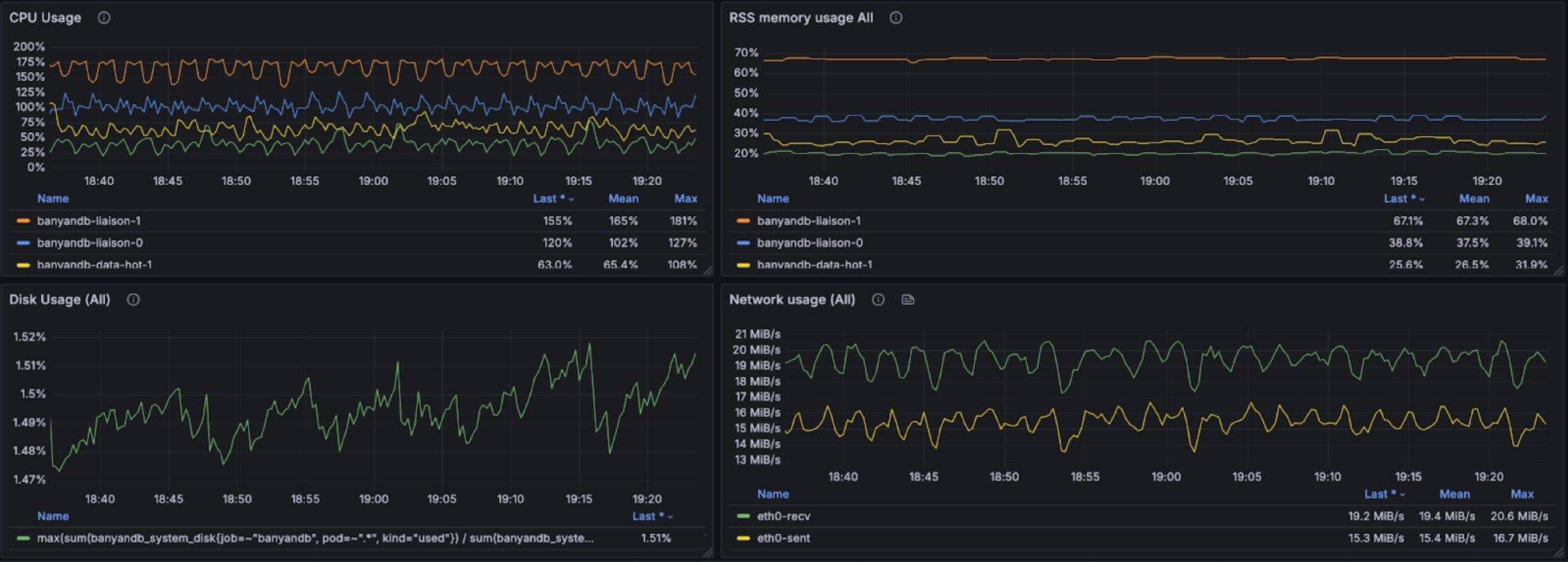

Stream
The test involves 54 services and 1,080 instances writing stream data, generating 151,000 stream records per minute.
The graphs below display resource usage and index performance during stream write operations:
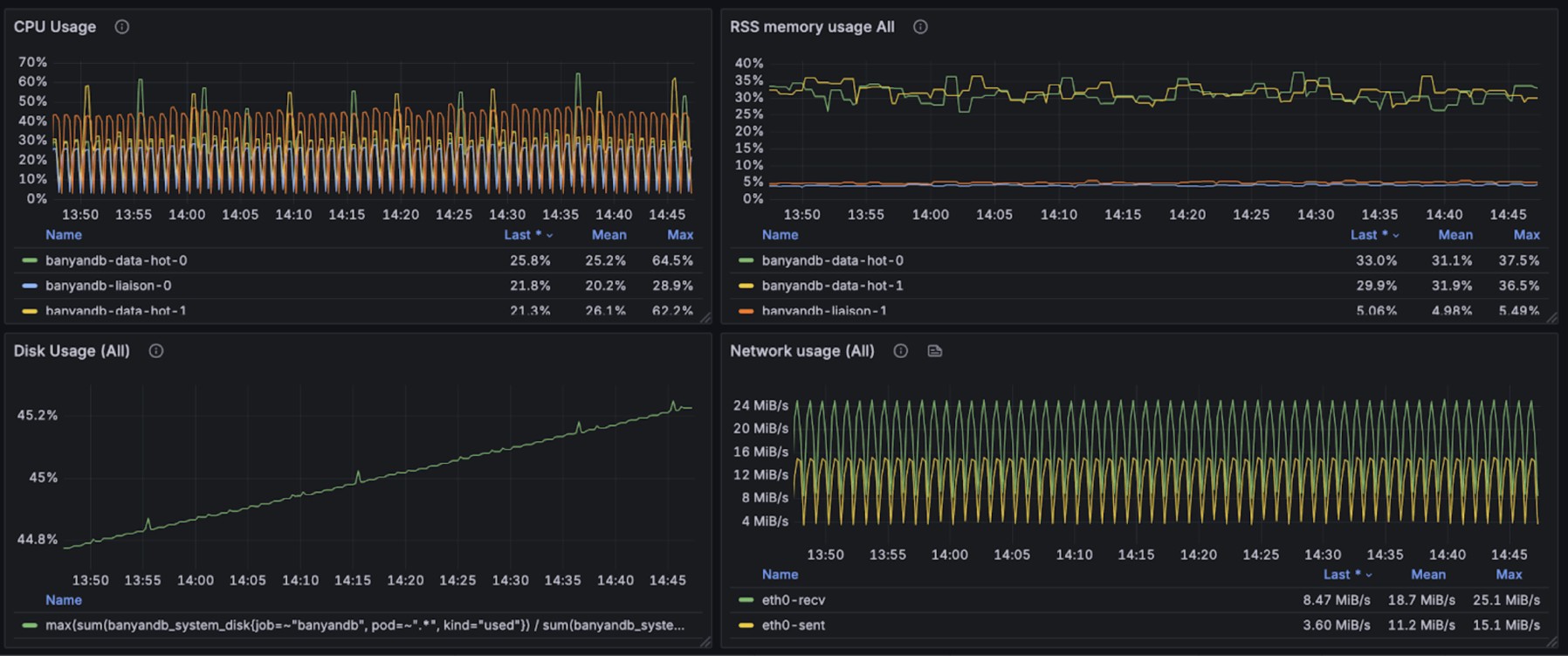
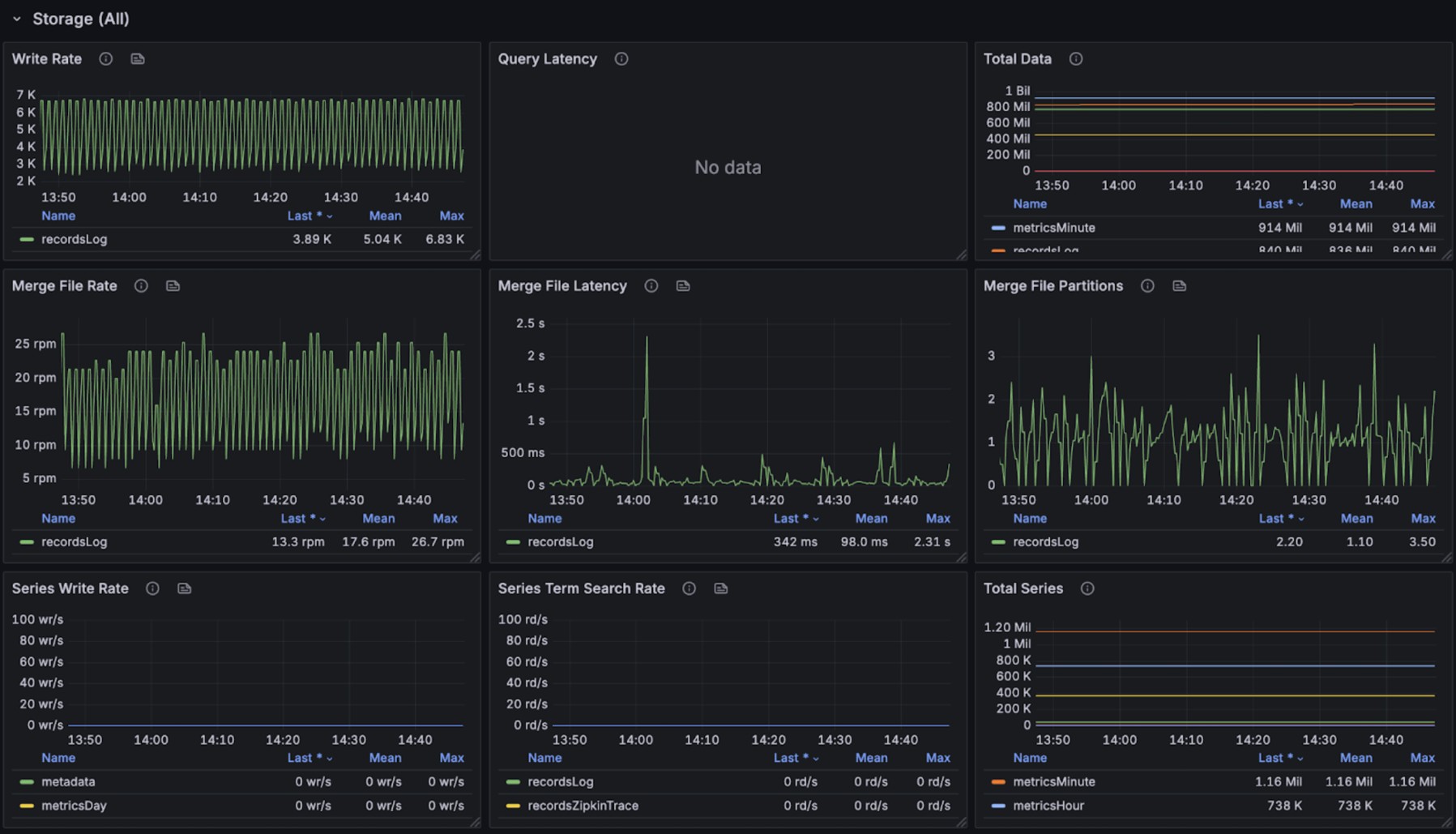

During concurrent write operations, queries were executed to retrieve stream data from the most recent 15 minutes. The stream query performance per request is as follows:
Per Request min, max, mean, median, p90, p95, p98, p99 duration (milliseconds): 3.394290, 237.884627, 10.186698, 7.443185, 13.951209, 21.687960, 49.968980, 72.631009
The following graphs show resource usage during combined read and write operations for stream data:
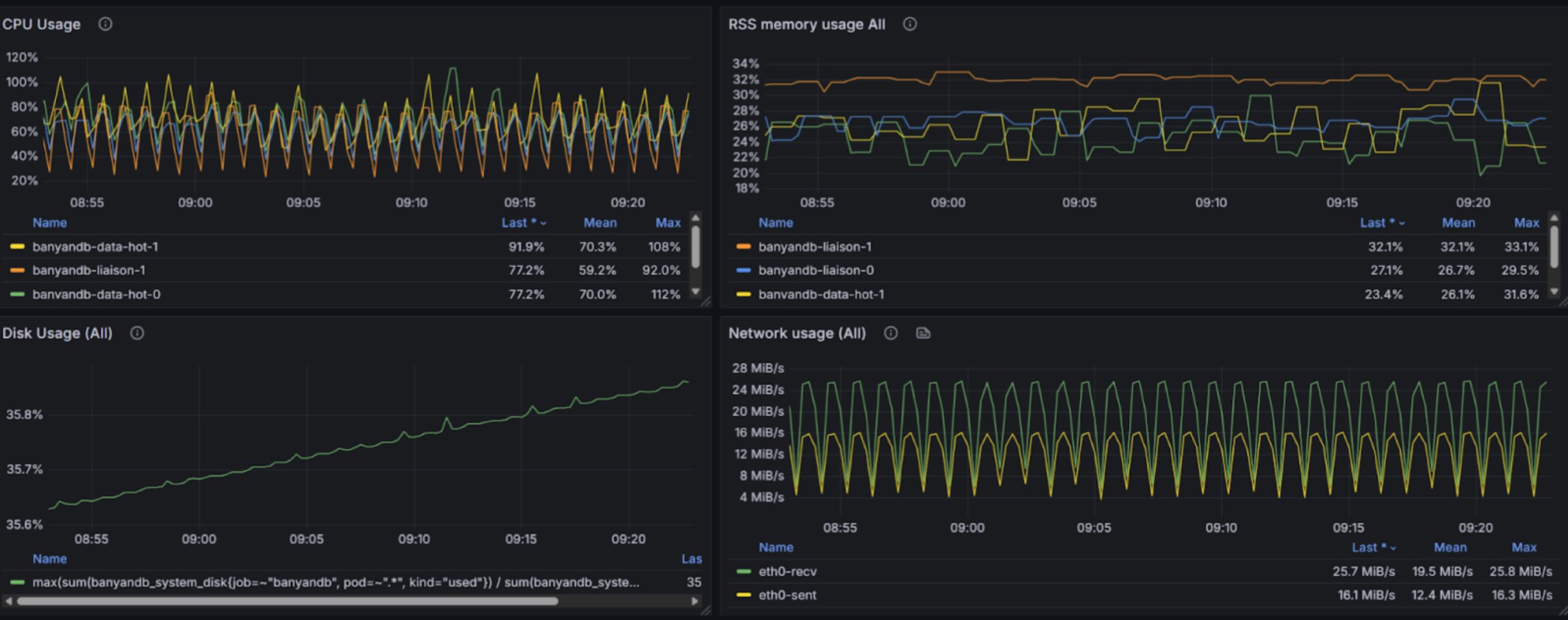
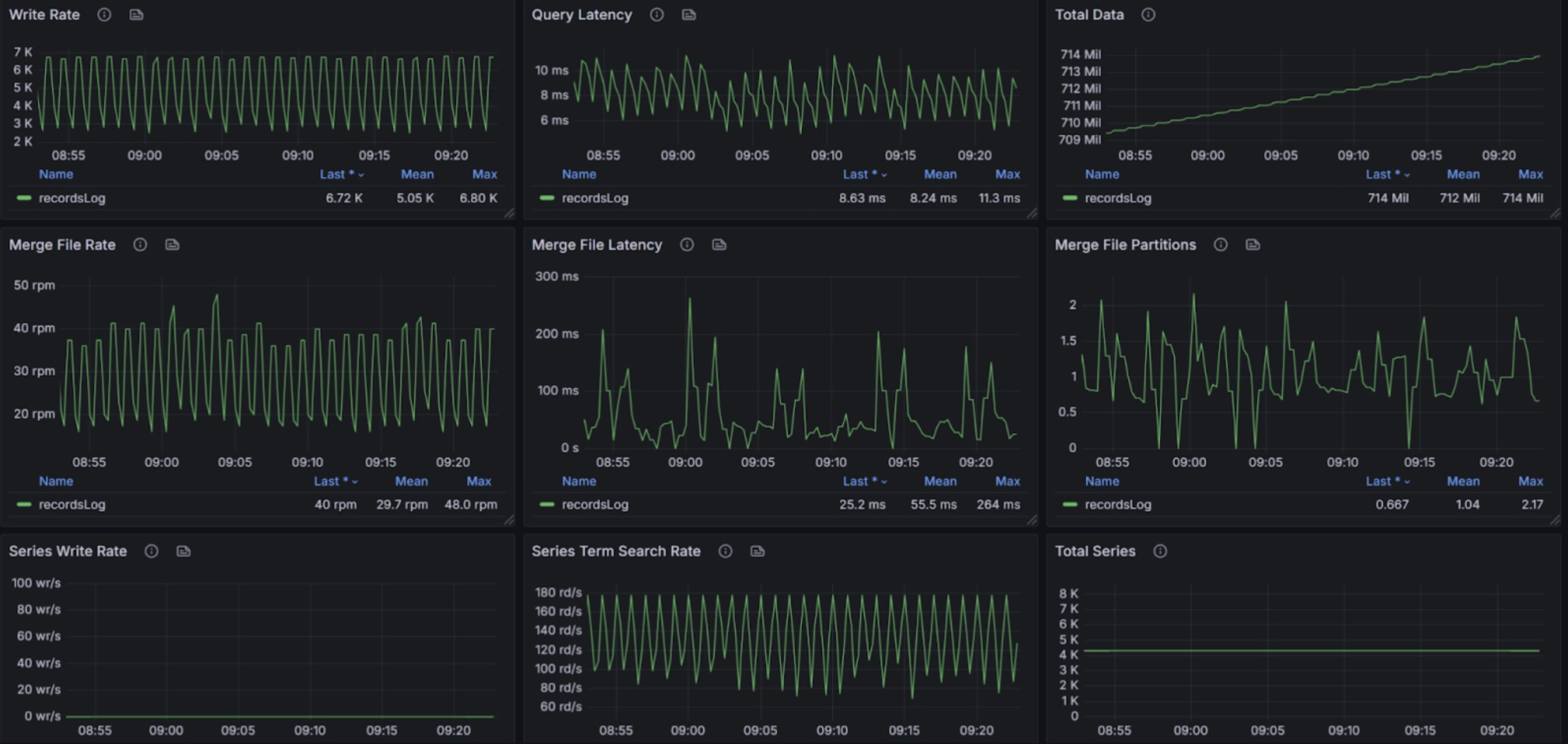
Trace
The test involves 48 services and 1,800 instances writing trace data, generating 6,600 traces within 133,200 spans per minute.
The graphs below illustrate resource consumption during trace write operations:
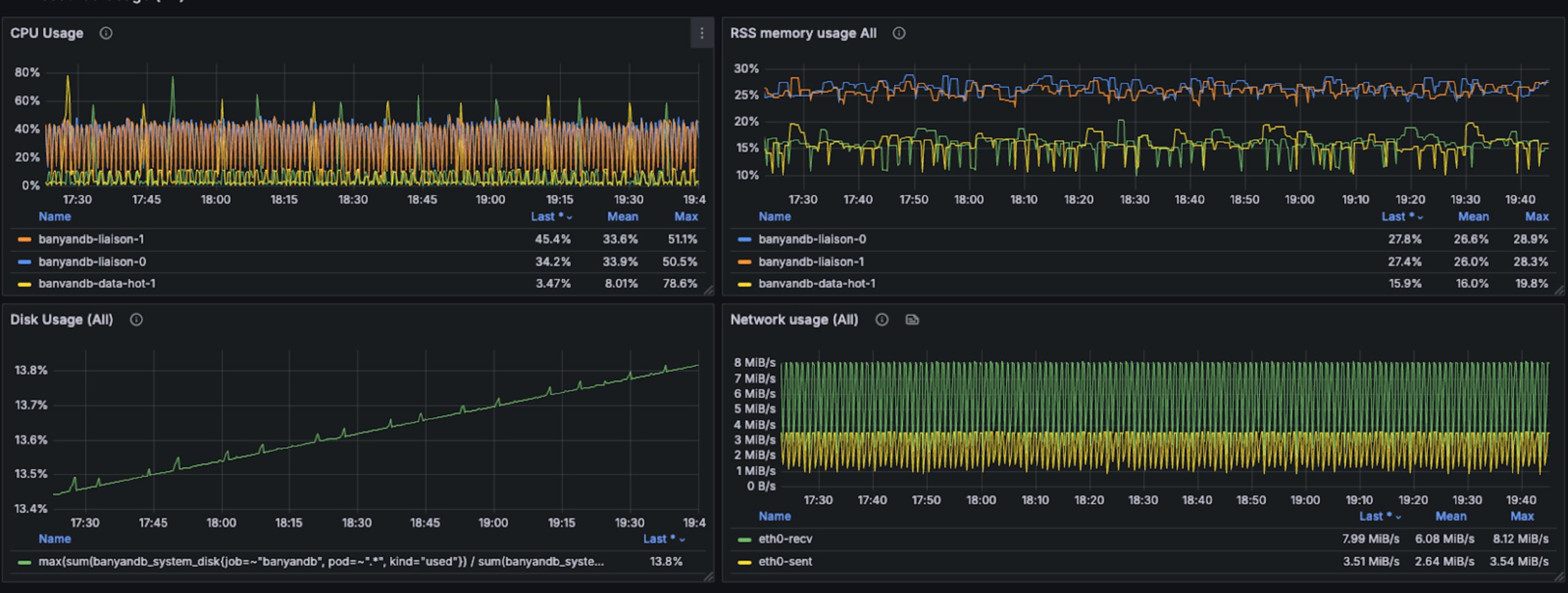

During concurrent write operations, three different query patterns were executed against the most recent 15 minutes of trace data. The trace query performance per request is as follows:
Per Request min, max, mean, median, p90, p95, p98, p99 duration (milliseconds): 37.750859, 1249.673034, 472.815065, 436.212444, 931.519287, 1007.228856, 1043.850870, 1097.840105
The following graphs show resource usage during combined read and write operations for trace data:
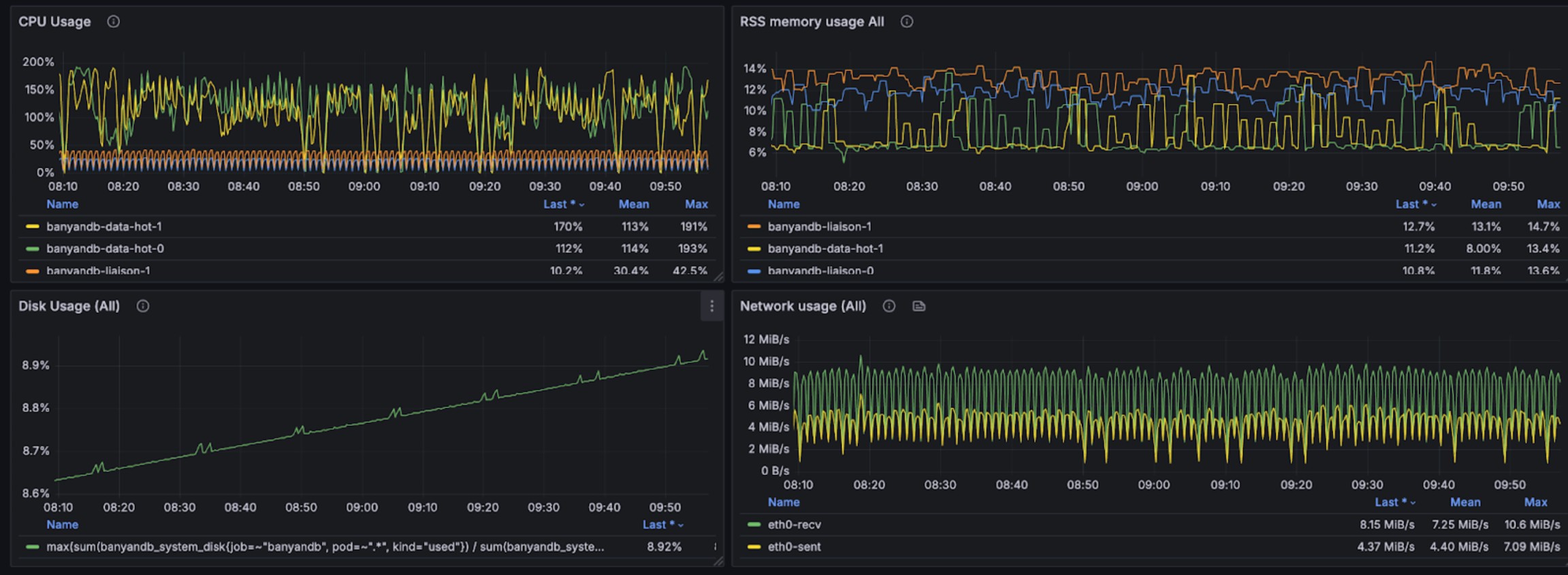

Summary
The benchmark demonstrates BanyanDB’s ability to handle high-throughput observability workloads efficiently. Over a sustained 3-day period, the cluster successfully ingested over 571,000 metric data points, 151,000 stream records, and 133,200 trace spans per minute while maintaining stable resource utilization with each pod limited to just 2 cores and 4GB memory.
Query performance remained responsive even under concurrent read/write workloads. Measure queries showed median latency of 26ms with p99 at 288ms, while stream queries achieved even better performance with median latency of 7ms and p99 at 72ms. Trace queries, which are typically more complex, showed median latency of 436ms with p99 at approximately 1.1 seconds.
The resource graphs demonstrate consistent CPU and memory usage throughout the test period, indicating efficient resource management and the absence of memory leaks or performance degradation over time. BanyanDB’s ability to handle concurrent read and write operations without significant resource spikes makes it well-suited for production observability workloads.
These results were achieved on a modest single-node setup (16 cores, 64GB RAM), suggesting that BanyanDB can deliver strong performance even in resource-constrained environments. For larger deployments, the cluster mode with multiple liaison and data nodes can provide additional scalability and throughput.